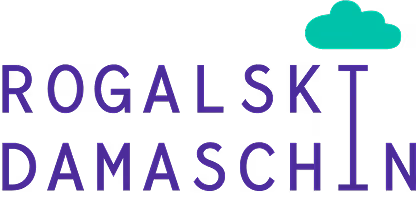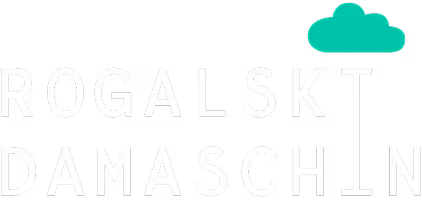
Emotions versus facts in communication: who wins the confrontation when misinformation arises?
- Disinformation amplifies emotions and erodes public trust.
- There is no one-size-fits-all solution for crisis communication.
- Organizations need to measure and communicate their impact transparently.
How can companies protect their reputation when they become the target of misinformation? How much do emotions and facts weigh in communication in such situations?
The speed with which worrying news circulates in the economy and the rise in popularity of extremist ideas have lately created real confrontations between supporters and critics of multinational companies. These organizationsare considered by a part of the Romanian public as the source of:
- increase in the trade deficit
- Unbalanced competition in certain sectors
- Unequal development between communities
- Acts of Economic Sabotage
- Some forms of abuse.
In this context, the question arises: What can these companies do to clarify and combat misinformation?

How we recognize misinformation and how we approach confronting emotions versus facts in communication
A first step is to understand how misinformation works.
Regardless of the nature and form that misinformation takes, they have a few elements in common. One of them is extracting information from the context that generated it and moving it to another context. It's like when we make a collage: the original parts of a cutout can no longer be found in the “final form”.
When it comes to strategies crisis communicationThere are no one-size-fits-all solutions. In addition, when these crises are generated by misinformation, nothing seems to work anymore because misinformation amplifies an unpredictable factor — emotions.
Most often, we are talking about the spectrum of negative emotions that drive either the demobilization of people or their negative mobilization. Thus, as opposed to extracting a statement from the context, organizations must be prepared to recreate a correct and credible context as quickly as possible.
Any collage can be built and deconstructed into millions of options and possibilities. During a crisis, however, reaction time is short, so it's fundamental to always have the right ingredients on hand.
Communication StrategiesThe organizations in Romania must be reconfigured to respond to these challenges, in the sense of incorporating proactive and reactive components to combat disinformation. Here are the ones that would be most useful:
Impact identification: fact-based communication that combats emotional perceptions
To prevent situations in which organizations are subject to public criticism based on feelings rather than facts, it is important to measure the real impact. This is possible with the help of a regular audit, carried out together with partners with a solid professional reputation.
The data obtained allow for proactive transparent communication. They can also be useful in crisis situations to generate valuable content that can help restore the truth.
In a crisis, fact-checking is important and that's why timely and properly understood aggregated data can be a valuable weapon to fight misinformation.
What type of data should be aggregated and understood:
- Value brought to the Romanian economy in relation to the number of employees, turnover and profit.
- Total contribution to the state budget through fees and taxes.
- The total contribution to society, relative to the turnover and profit of the company.
- Direct and indirect benefits for Romania — industries influenced, infrastructure created, specializations and expertise arising as a result of the company's presence in Romania.
- The value of direct investments such as deposits, offices, assets and others.

Impact Communication: Facts That Beat Emotions
Economics is difficult to understand, so complex concepts need to be translated into simple and accessible language to anyone.
Starting from analyzes carried out by economists, professors, experts or analysts, supported by specialized institutional partners, we can bring to public attention all the aspects necessary for a topic to be understood completely and correctly.
The conversation is amplified throughout society with the help of Media Partnershipsin the medium and long term. This concerns, in particular, business, economic and industrial media. However, in order to reach as large an audience as possible, the inclusion of generalist media with a large reach is also recommended.
It is important to note that these approaches support long-term communication efforts, with the potential to shift public perception from “a necessary evil” to an “essential partner for development”.
Amplifying Impact: How to Build Trust by Communicating Through Facts
In such a context, the orientation of CSR budgets from donations and targeted actions towards sustainable development actions is critical. Thus, organizations can bring value to society in the long term, in strategic areas such as education, entrepreneurship, innovation and research.
Research studies help organizations have a clear and complete picture of the field in which they are involved. They validate the relevance of their engagement before the public, help create an effective action plan and allow the impact to be measured over time.

The CSR strategy provides a broad and productive territory for communication, focusing on:
- results of the research study
- communication of the initial objective assumed
- achievement of intermediate targets
- annual balance sheets
- key achievements and moments.
All these dates and moments constitute in themselves solid opportunities for communication. Moreover, they prove the claim that multinationals are deeply connected to the reality of the local communities in which they operate and are an essential component of a healthy economy.
Here are some examples of CSR directions:
- Investments in educational and vocational infrastructure:science laboratories in schools, vocational qualification programs, modern libraries in rural areas, etc.
- Developing business hubs and knowledge accelerators:partnerships with universities and local and international investment funds that can support innovation and provide funding opportunities.
- International opportunities for local talent:financing the participation of representatives of Romania in international competitions, support for patenting inventions or facilitating the obtaining of internationally recognized certifications.
- Support for cultural projects:transforming local initiatives into brands that create a positive cultural reputation for Romania, supporting tourism and bringing revenue to the local budget. George Enescu, TIFF and Untold are among the best known, but the cultural market in Romania has huge potential.

Questions and answers about the impact of misinformation and emotions versus facts in communication
- How do emotions affect the communication process?
Emotions can amplify false messages and diminish attention paid to facts. Effective communication must balance the rational with the emotional. - Is it possible for a company to completely prevent the effects of misinformation?
Not completely, but through proactive strategies, transparent communication, and quick reactions based on data and facts, the organization can minimize negative effects and restore credibility faster. - Can a company turn a misinformation situation into an opportunity?
Yes, quick clarification of the facts, transparency and creative communication, can strengthen the image of the brand.






